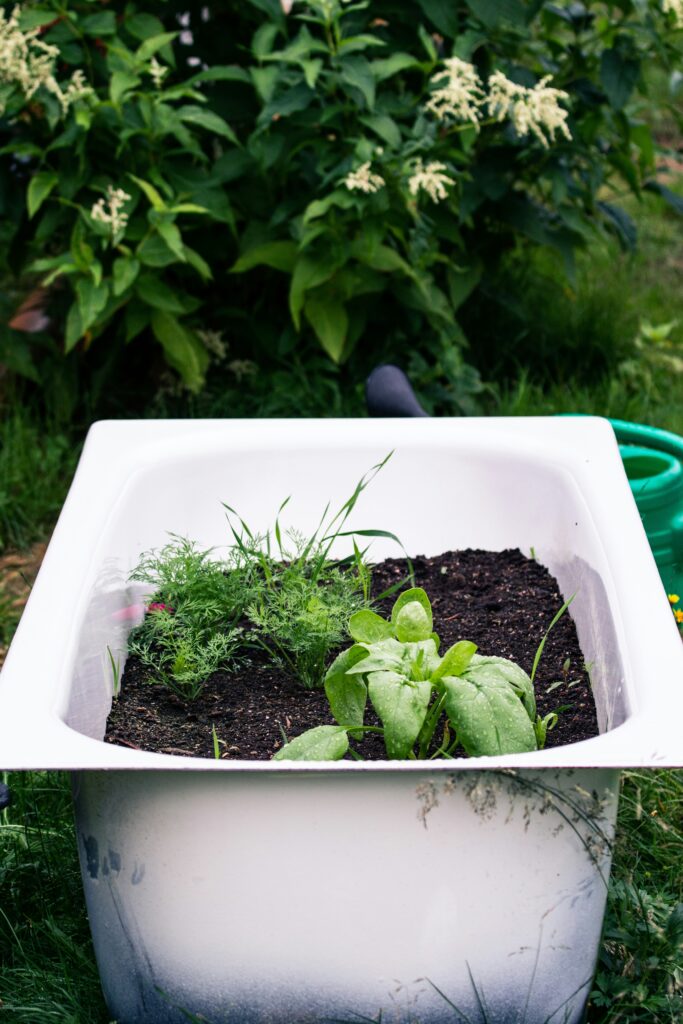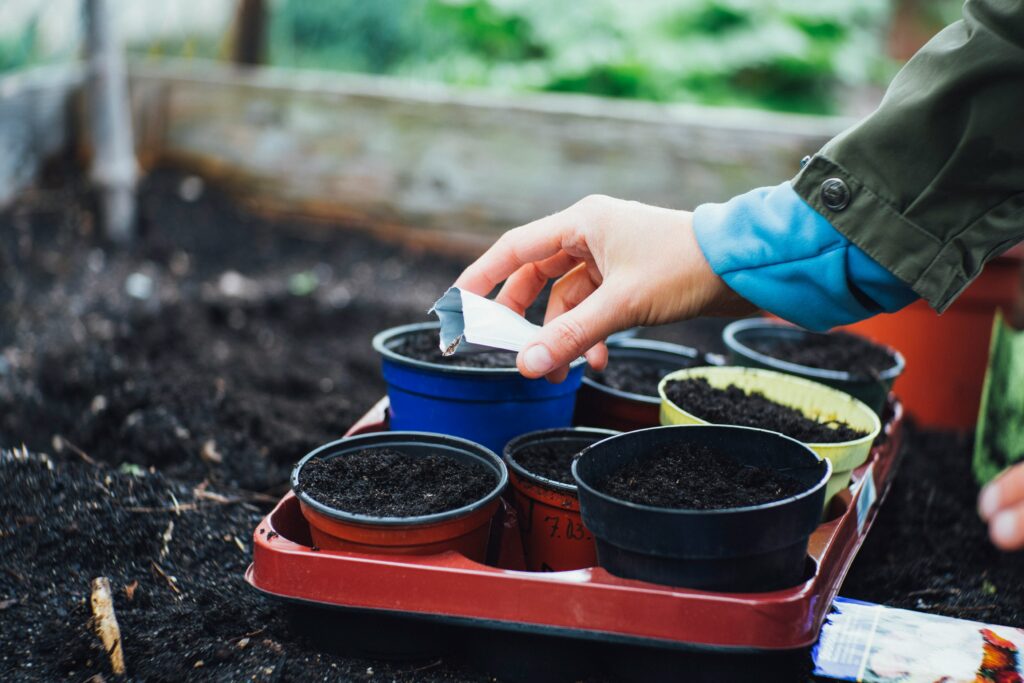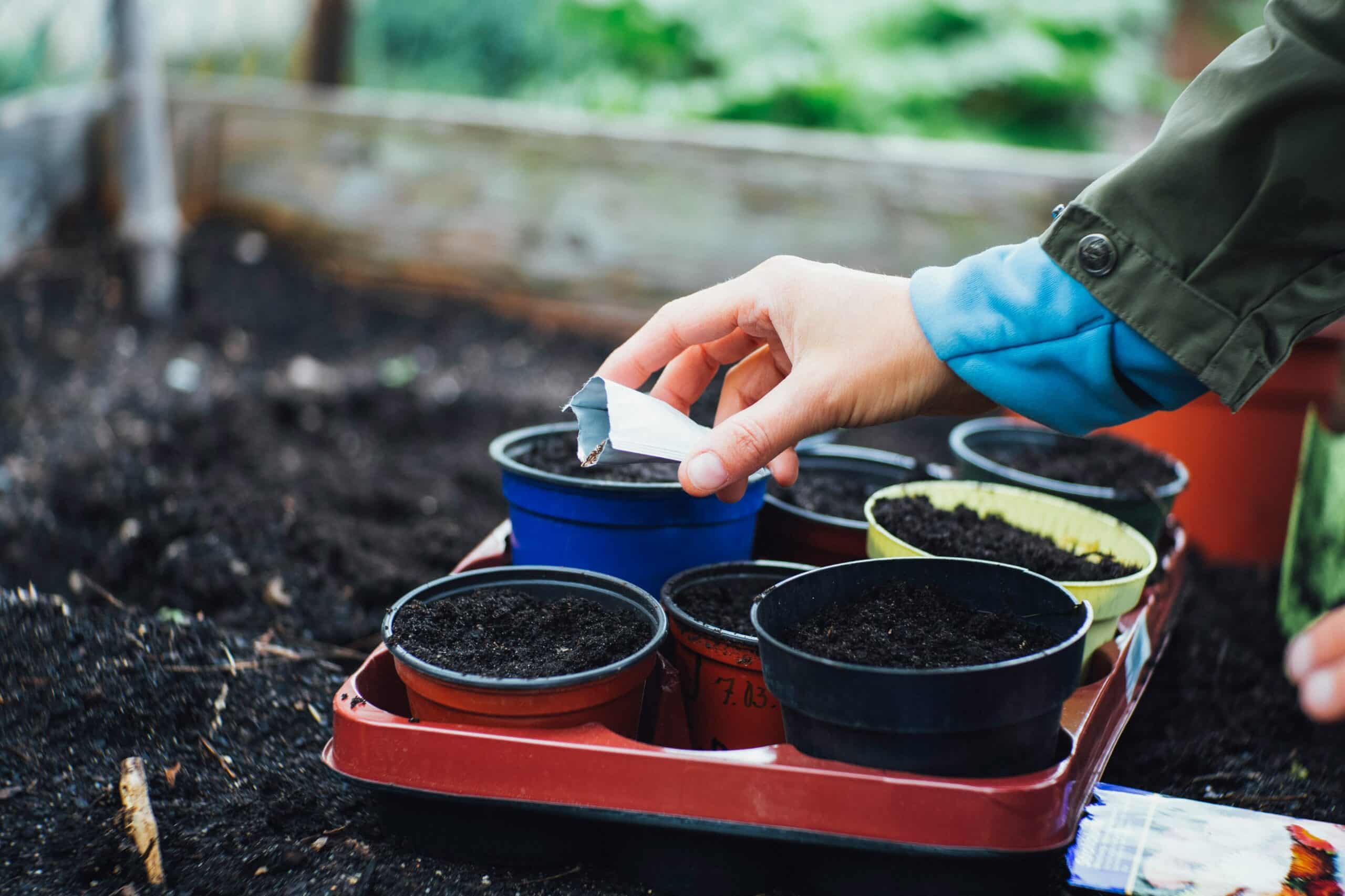Anúncios
Are you worried that your small living space is not conducive to gardening success? If your answer is a resounding yes, then you’ve come to the right place. This discussion on ‘Grow Big on a Small Budget: Thrifty Tips for Container Gardening Success’ aims to be your guide in creating a thriving garden without breaking the bank.

Our discussion takes us through the journey of container gardening, a practice that allows you to garden in small spaces and under budget constraints. It will offer an array of cost-effective, practical, and innovative gardening tips that will bring about your gardening success. As the title suggests, it’s all about growing big on a small budget.
Anúncios
This discussion will cover various aspects of container gardening, such as choosing the right containers, picking the perfect plants, understanding the nuances of soil and compost, managing water and nutrients, and dealing with pests. Each of these topics is crucial for a thriving container garden, and will be discussed in detail, thereby providing you with a comprehensive guide to gardening success.
Moreover, the focus will not only be on the functional aspects of gardening but also on the aesthetics. For it’s not just about growing plants but creating a garden that adds beauty to your home. We delve into the art of arranging plants, choosing a color scheme, and picking plants of different heights and textures, all in a way that fits your budget.
Anúncios
So, are you ready to embark on this gardening journey? Ready to transform your small space into a green haven? Eager to see your green thumb work magic despite budget limitations? If so, gear up for some useful, budget-friendly, and creative tips for container gardening success. The world of gardening awaits! 🌱🌼🌷🍅🌻
Choosing the Right Containers
In container gardening, the choice of containers plays a significant role. Essentially, a container must provide the right environment for plants to flourish. Some considerations to keep in mind while selecting containers include the material, size, and drainage facilities.
Material
Containers come in a variety of materials such as plastic, terra cotta, ceramic, and wood. Each material has its own set of pros and cons. For instance, plastic containers are lightweight and inexpensive, but they can deteriorate over time due to exposure to sunlight. Terra cotta and ceramic containers, on the other hand, are more durable but heavier and more expensive.
Size
The size of the container should match the growth requirements of the plant. A container that is too small may stunt the growth of the plant, while a container that is too large might lead to overwatering. Generally, the container should be large enough to accommodate the plant’s root system comfortably.
Drainage
Good drainage is crucial for plant health. Ensure that your chosen container has sufficient drainage holes. If not, you may need to drill additional holes.
Choosing the Right Soil Mix
The choice of soil mix can significantly impact the health and growth of your plants. Rather than using garden soil, which can compact and limit aeration, consider using a high-quality potting mix. This mix typically contains peat moss, perlite, and compost that provide a well-drained, nutrient-rich environment for plants.
Consider DIY Soil Mix
Creating your own soil mix can be a cost-effective alternative to store-bought mixes. You can customize the mix to suit the specific needs of your plants. A simple DIY mix could include one part compost, one part peat moss, and one part perlite.
Choosing the Right Plants
Not all plants are suitable for container gardening. Consider the size and growth habit of the plant, as well as its light, water, and nutrient requirements. Generally, plants with shallow root systems are ideal for container gardening.
Consider Plant Compatibility
If you plan to grow multiple plants in a single container, ensure they have compatible growing conditions. For example, some plants require full sun, while others prefer shade. Some plants require more water than others.
Regular Maintenance: Keeping Your Container Garden Thriving
Maintaining a container garden goes beyond just planting your flowers or vegetables in a pot. It involves ongoing care and attention to ensure that your plants stay healthy and productive. Regular maintenance is essential for the success of your garden, as container-grown plants face different challenges compared to those planted directly in the ground. Key components of maintenance include consistent watering, proper feeding, pruning, and effective pest management. By incorporating these practices into your gardening routine, you can ensure that your plants flourish and continue to thrive throughout the growing season.
Watering: Keeping Your Plants Hydrated
Container plants often require more frequent watering compared to ground plants. Since the roots of plants in containers have limited access to moisture, they can dry out faster, especially during hot weather or if the container is small. The frequency of watering depends on several factors, including the plant’s specific water requirements, the size and material of the container, and the surrounding weather conditions.
In general, containers dry out more quickly than garden beds, so it is important to keep a close eye on your plants’ watering needs. For plants in small containers or during hot spells, watering may need to be done daily or even more often. To avoid overwatering, it’s crucial to check the soil moisture regularly. You can do this by sticking your finger about an inch into the soil—if it feels dry, it’s time to water.
Watering at the right time is also important. Early morning or late afternoon are ideal times to water your plants, as the cooler temperatures reduce evaporation, ensuring that your plants get the water they need. Water deeply, allowing the moisture to reach the plant’s root system. If your container doesn’t have proper drainage, excess water can lead to root rot, so it’s important to ensure that the potting mix has adequate drainage properties.
Feeding: Providing the Right Nutrients
Unlike plants in the ground, container plants cannot access the nutrients found in the surrounding soil, so feeding them regularly is essential for healthy growth. Container mixes tend to lose their nutrients more quickly, especially if you’re growing plants that require a lot of nutrition, such as vegetables or flowering plants. Therefore, regular feeding is a must.
For most container plants, a water-soluble fertilizer is a great option. These fertilizers are easy to apply and provide quick nutrients that plants can absorb. Be sure to follow the instructions on the fertilizer package, paying attention to the recommended application rates to avoid overfeeding your plants. Over-fertilizing can cause nutrient imbalances or burn your plants’ roots, while under-fertilizing may result in slow growth and poor blooms or fruit production.
It’s important to consider the specific needs of your plants when choosing a fertilizer. Some plants, such as those grown for flowers, may benefit from higher levels of phosphorus to encourage blooming, while leafy vegetables might need more nitrogen for strong, lush growth. Regularly feeding your plants will help ensure they stay healthy and vibrant throughout the growing season.
Pest Management: Keeping Your Plants Safe
Regular pest inspection and management are vital components of maintaining a healthy container garden. While container plants are generally more protected from pests compared to ground plants, they are still susceptible to various pests like aphids, spider mites, and whiteflies. These pests can damage your plants, so it’s important to inspect your plants regularly to identify any signs of infestation.
Look for symptoms such as discolored or damaged leaves, sticky residue, or visible insects. Early detection is key, as it can prevent the pest population from growing and causing serious harm to your plants. If you notice pests, consider using organic or DIY pest control methods to manage the situation without harming the environment or beneficial insects like bees and ladybugs. Common eco-friendly pest control options include neem oil, insecticidal soap, and diatomaceous earth.
In addition to pest management, you should also regularly remove any dead or damaged plant material to avoid attracting pests. Pruning your plants and keeping the surrounding area clean and tidy can help prevent pest infestations and encourage healthy plant growth.
Pruning: Encouraging Healthy Growth
Pruning is an essential part of container plant maintenance. It not only helps shape and control the size of the plant, but it also encourages healthy new growth and improves airflow around the plant. Pruning can be especially important for flowering plants and vegetables, as it helps them focus energy on producing new growth, flowers, or fruit rather than sustaining damaged or old growth.
Regularly removing dead or yellowing leaves will also prevent the spread of diseases and pests. When pruning, be sure to use sharp, clean tools to avoid damaging the plant. Additionally, removing spent flowers or faded blooms, a practice called “deadheading,” encourages the plant to continue blooming and producing flowers.
If you’re growing climbing plants, such as tomatoes or beans, you may need to trim and guide their growth to ensure they stay upright and well-supported. This can help maximize your space and allow sunlight to reach all parts of the plant.
Additional Maintenance Tips
Seasonal Care: Depending on your climate, container plants may require different care throughout the year. In colder months, you may need to bring your plants indoors or use protective covers to shield them from frost. In hot, dry weather, you might need to water more frequently and adjust the placement of your containers to prevent sunburn.
Container Size and Material: Make sure that your containers are the right size for your plants. If they’re too small, the plants may become root-bound, which can limit their growth. Also, consider the material of the container. Clay pots, for example, dry out faster than plastic ones, so they may require more frequent watering. Choose a container that suits the plant’s needs and your maintenance preferences.
Mulching: Applying mulch on top of the soil in your containers can help retain moisture, regulate temperature, and suppress weeds. Organic mulches like wood chips, bark, or shredded leaves can also add nutrients to the soil as they break down.
Repotting: Over time, plants may outgrow their containers, and the mix may lose its structure. Repotting your plants into a larger container or refreshing the potting mix ensures they have room to grow and continue thriving. Check for signs that your plant is root-bound or showing poor growth, which may indicate that it’s time to repot.
Thrifty Tips
- Recycle: You can save money by using recycled containers. Consider using old buckets, baskets, or even footwear as plant containers. Just ensure they have good drainage.
- Swap Plants: Consider swapping plants or seeds with fellow gardeners. This way, you can diversify your garden without spending any money.
- Compost: Making your own compost is an economical way to provide your plants with rich, organic material.
- Propagate: You can propagate plants from cuttings or seeds. This is much cheaper than buying mature plants from a nursery.

Conclusion
In conclusion, successfully growing big on a small budget through container gardening doesn’t have to be an unattainable dream. With the right approach, knowledge, and thrifty tips, it can indeed become a reality. By choosing the right containers, selecting suitable plants, using homemade compost, repurposing items, and efficiently using water, you can maximize your gardening success while minimizing expenses. Additionally, understanding and implementing proper plant care techniques can enhance your garden’s productivity and longevity. Remember, success in container gardening isn’t about how much you spend, but how smartly you utilize your resources. And remember, patience and dedication are just as vital as your budget. Happy gardening!
Remember, your garden is an extension of you. So, 🌿grow as you wish, 🌻bloom where you are planted, and 🌸flourish in your own unique way. Container gardening success is within your reach, regardless of your budget. So, get started today, and watch your garden and savings grow together. 🌱🌼🌾
Embrace the joy of gardening, and reap the rewards of your green thumb, without breaking the bank. Thriftiness in container gardening doesn’t equate to sacrifice. Instead, it’s about maximizing efficiency and embracing creativity. Gardening is a journey, enjoy every step of the way. 🍀🍅🌽 Happy gardening on a budget!

